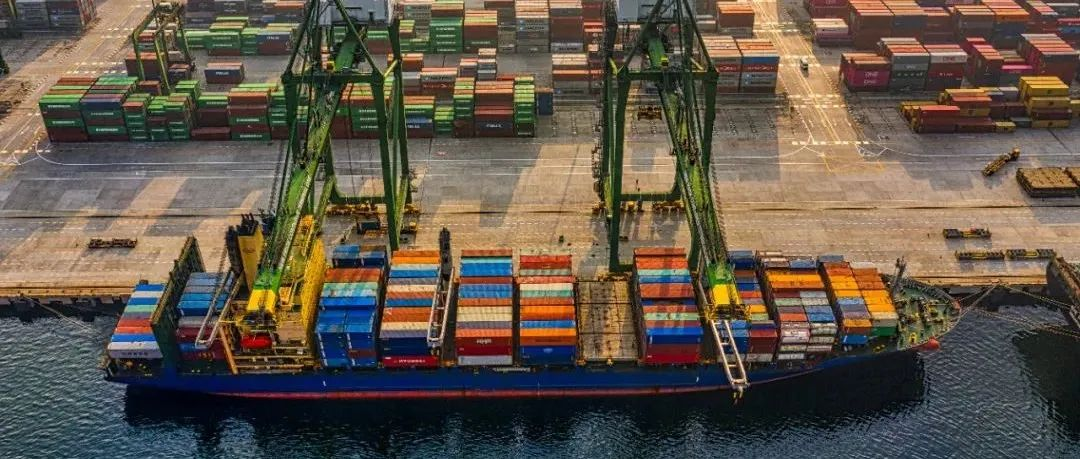Writing | Zhou Mianwu
Editing | Cold Zelin
According to the China Association of Automobile Manufacturers (CAAM) data, the export volume of new energy vehicles reached 39 thousand units in May 2022, of which Tesla accounted for 22.3 thousand. For Chinese new energy vehicle companies going global, they are still in the early stages. This article will briefly analyze the basic situation of new energy vehicles going overseas, discuss why the Chinese, American, and European markets are the most important, why the Norwegian market is a trendsetter, and why the Chinese market is the touchstone.
The Chinese, American, and European Markets are the Most Important
China, the United States, and Europe are the three most important markets in the automotive industry worldwide. From 2019 to 2021, these three markets accounted for 65.27%, 66.37%, and 65.13% of global automobile sales respectively, consistently remaining at around 65%.

In addition, Japan is the third-largest single-market for automobile sales, accounting for only about 5% of global automobile sales, far less than the top three markets of China, the United States, and Europe.
For any car company that wants to become a global brand, they will inevitably try to make an impact on the Chinese, American, and European markets.
At present, Tesla is leading the charge, achieving a new energy vehicle sales ratio of more than 10%+ and investing in self-owned factories in all three markets. No other new energy vehicle company has achieved both of these points in two markets simultaneously.
For Chinese car companies planning to expand overseas, they must first choose between the United States and Europe.
Compared to the United States, Europe has three major advantages:
- Higher Market Penetration
In 2021, the market penetration rate in Europe was 14%, while that in the United States was only 4%. The overall market acceptance in Europe is obviously better.
- More Favorable Policy Environment
Compared to the intense competition in China and the United States in all aspects, Europe is still more relaxed in this regard.
- Weaker Local Competitors
Going to the United States means facing Tesla on their home turf. Going to Europe, facing the local car companies such as Volkswagen, BBA, and Skoda, the local competitors for new energy vehicles are much weaker.
In fact, we have seen that many car companies choose to prioritize Europe when going global, with Norway being their first choice.
The Norwegian Market is a Trendsetter
Norway, as the country with the highest penetration rate of new energy worldwide, had a new energy penetration rate of 89% in 2021, far ahead of the second-ranked Netherlands, whose penetration rate was 64%.
As the country with the highest penetration rate, it naturally attracts the attention of car companies. NIO, XPeng, and Voyah all chose Norway as their first country to land overseas.
In this process, they will inevitably face new challenges. Li Bin said in a conference call in June 2022 that Norwegian consumers are different from Chinese consumers in their understanding of electric vehicles, price sensitivity, and culture.According to Eu-EVs data statistics, the total registration volume of various EV brands in the Norwegian market from January to May 2022 is as follows:
-
Tesla: 5,375 vehicles, a share of 12%
-
Polestar: 1,984 vehicles, a share of 4.4%
-
FAW Hongqi: 856 vehicles, a share of 1.9%
-
BYD: 644 vehicles (excluding freight vehicles), a share of 1.4%
-
Xpeng: 447 vehicles, a share of 1%
-
NIO: 404 vehicles, a share of 0.9%
In terms of sales, Tesla has an advantage in the Norwegian market, and Polestar, as a Volvo brand, sells better in Northern Europe than in China. Currently, Hongqi sells better than BYD, Xpeng, and NIO.
In 2021, a total of 176,000 new cars were sold in Norway, only 23.9% of the sales volume in Shanghai during the same period. This means that for Chinese automakers, how many cars they can sell in Norway is not actually important, but more of a barometer.
Entering the Norwegian market is the first step towards expanding overseas. A market share of over 10% in Norway is more significant as it demonstrates the ability to establish a foothold in European countries, laying the foundation for the opening up of larger markets in other European countries.
The Chinese market is a litmus test
In 2021, China occupied 53% of the global market share for new energy passenger vehicles, making it the most fiercely competitive new energy vehicle market in the world. Foreign companies such as Tesla are also allowed to build wholly-owned factories, but they are required to use the supply chain of Chinese companies.
The Chinese new energy vehicle market is the best litmus test for automakers, and the companies that can thrive in such a highly competitive market are proven to be the real deal.
On December 30, 2019, the first batch of domestically produced Tesla Model 3 was delivered, at which time there were widespread doubts about domestically produced new energy vehicles.
In the two years since then, Tesla’s sales in China have skyrocketed from 29,000 vehicles to 484,100 vehicles.
While Tesla has been aggressively expanding its presence, some Chinese new energy vehicle makers have fallen behind, but others such as BYD, NIO, Xpeng, Li Auto, and Leapmotor have been growing at similar, or even faster, rates.
To succeed in going overseas, companies must first secure a foothold in the Chinese market. There are typically two stages for automakers to go overseas: First, they will export small quantities of cars to interact with consumers; second, they will establish factories in larger markets to expand their supply capacity.
For super-large markets like China, the United States and Europe, building factories locally is essential if automakers want to gain sufficient market share. On the one hand, it can reduce logistics and tariff costs for car companies; on the other hand, it can create new job opportunities, generate tax revenue and consumption, and achieve a win-win cooperation with locals.Therefore, there are four main factors for Chinese car companies to consider when going overseas:
- Excellent performance in the Chinese market
- Market response before going abroad
- Announcement and establishment of foreign factories
- Completion time for foreign factories
The first two points have already been addressed by some car companies. For instance, BYD has built two bus factories in Europe, and there are reports that it may also build battery factories. However, no Chinese new energy vehicle manufacturer has yet announced plans to build passenger car factories in Europe.
Announcing the establishment of foreign factories is a major milestone, and the official operation of foreign factories is another key point. Tesla has taken the lead in this aspect, as it has already started production in its factories in China, the United States and Europe.
It is hoped that Chinese car companies will not waste the advantageous condition of having the largest new energy vehicle single market at their back, and quickly land the next key milestone in their next overseas venture.
This article is a translation by ChatGPT of a Chinese report from 42HOW. If you have any questions about it, please email bd@42how.com.
